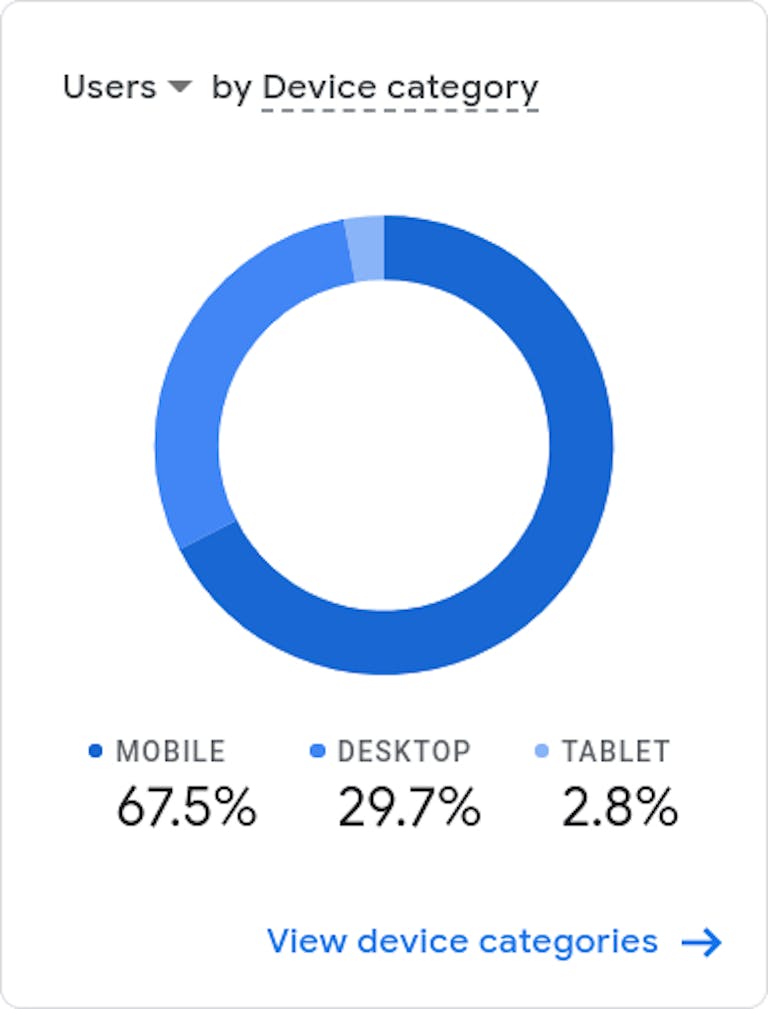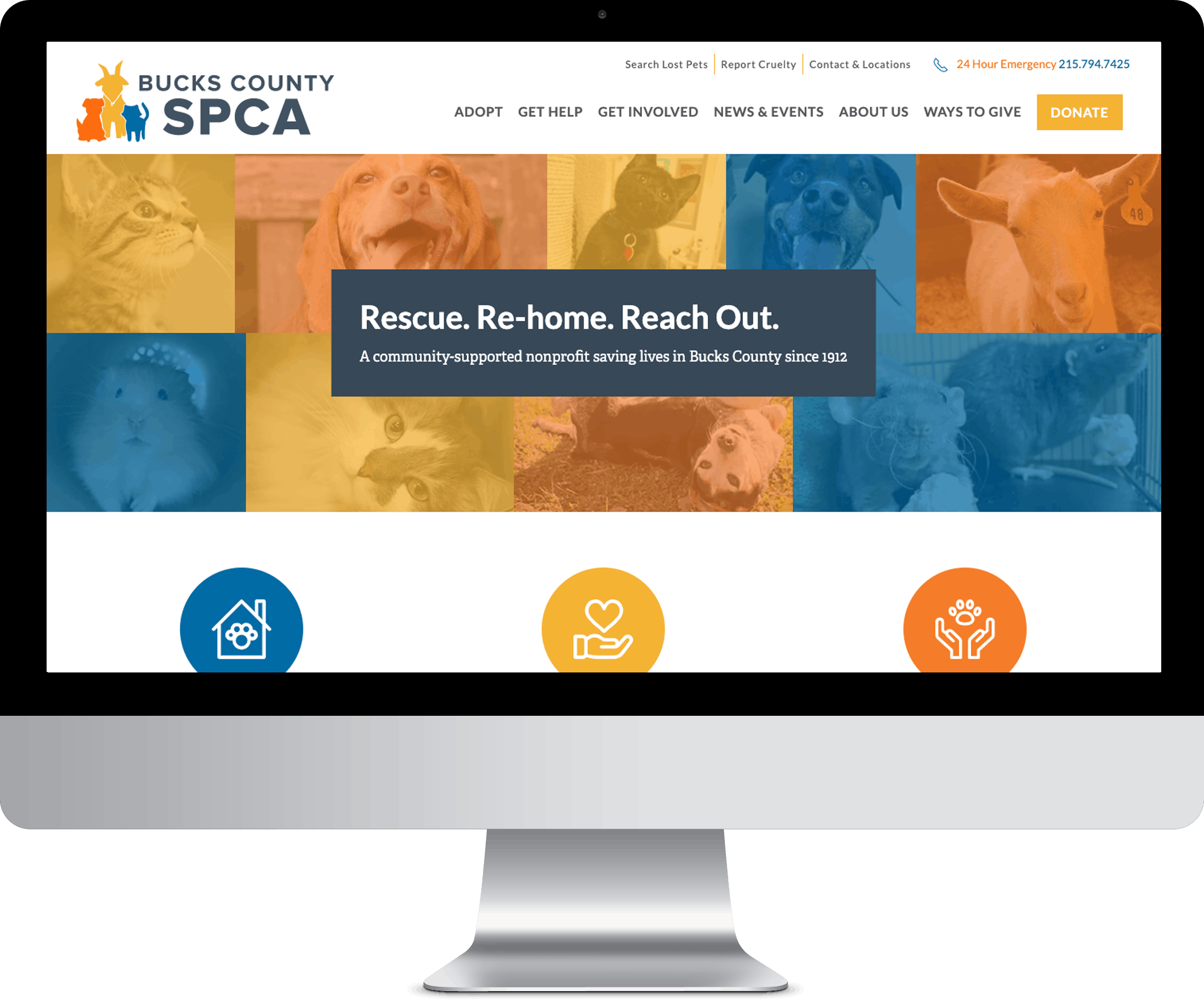There are many reasons why a company may choose to redo its website. Sometimes it’s just to match the company’s updated branding. But other times it’s because the site is either old or just plain bad. An old site may have been good when it was first launched, but is now outdated and in need of replacement. A bad site is one that was flawed from the outset for one reason or another. Regardless of whether your site is old or bad, the outcome is the same — your site will need to be redesigned to be competitive.
In this article, we’ll cover six criteria you can use to determine how old (or bad) your current site is and whether it’s time for a new one. These criteria are mobile optimization, performance metrics, design & appearance, analytics & feedback, search engine optimization (SEO), and security.
Mobile Optimization

Every modern website must be optimized for use on mobile devices for two main reasons. First, a large, significant portion of your site visitors are likely using mobile devices. And depending on your industry and target audience, the majority of your visitors may even be mobile users. But, even if mobile devices account for a smaller portion of the visitors your unoptimized site currently receives, you could be receiving many more if it was optimized. Every year, more and more people are accessing the web on their smartphones and tablets. If they land on your site and find it difficult to use, most of them are simply going to leave.
The second reason is that Google uses mobile-first indexing. Mobile-first indexing began rolling out in 2017, was applied by default to all new sites starting in 2019, and is active for all sites as of 2021. If your site isn’t optimized for use on mobile devices, you’re missing out on SEO benefits.
Mobile-first indexing means that Google uses the mobile version of your site when indexing and ranking. This is done both because of the increase in mobile users and the fact that mobile versions of sites are more simplified. Mobile sites can be indexed quicker and provide users (and Google) with the information they’re looking for without all of the added flare many desktop versions have. It should also be noted that the old way of creating a mobile site was to have an entirely separate site served to mobile users. Today, sites should instead be responsive — resizing, reformatting, and streamlining the site to be displayed across any screen size.
Performance Metrics

How are your site’s performance metrics looking? Do pages load quickly? Is your site accessible to all users? Do page elements move around while the page loads? Does it follow best practices in how it’s built? Is the underlying code streamlined? Are there any major SEO errors? Basically, how well does your site work? You can check your site’s performance metrics by right-clicking on your site, selecting inspect, and navigating to the Lighthouse tab.
Performance metrics are important for both your visitors and Google’s crawlers. If your site doesn’t work well, visitors are going to become frustrated and leave. The more competitive your industry is, the easier it will be for frustrated visitors to find another site that offers the same thing you do, but with a better site experience. And as far as Google is concerned, sites that have better performance metrics are ranked higher.
Design & Appearance

Even if your site works perfectly, does it look old? Generally speaking, if your site looks old, that’s because it is and it probably doesn’t work as well as a newer site. Visitors understand this and may leave your site before even giving your business a chance just because your site looks outdated. You probably take care to make sure your storefront or place of business looks clean and respectable — the same should be true for your website. Nobody wants to go into a business that looks run down, and nobody wants to stay on a site that looks like it’ll give their computer a virus.
The user experience (UX) and user interface (UI) of your site are also very important. How easy is it for visitors to navigate your site? Can they find the information they’re looking for quickly and easily? Are your menus clean and uncluttered? Are your fonts legible? What about buttons, are they easy to recognize and click? A good website is one that visitors naturally understand how to navigate and which doesn’t lead them to digital dead-ends. When laying out a site, the path you want the user to follow should be considered.
Analytics & Feedback
One great way to check the pulse of your site is to look at your analytics. Are you seeing that visitors are leaving your site en masse from a particular page? If so, try to figure out what’s causing them to leave. Are they abandoning the conversion process partway through? Investigate what’s stopping them from completing it. Or perhaps you see that specific pages are performing exceedingly well. Can you replicate this success on other pages? If you’re seeing more bad trends than good, it may be a sign that your site is in need of a revamp so that the issues can be fixed from the ground up.
While analytics are great, an even better way to determine how your visitors feel about your site is to gather direct feedback. This will help you understand the specific pain points your visitors experience when using your site, as well as what parts of your site they like.
Search Engine Optimization

One nice thing about SEO is that many aspects of it can be applied to old or bad sites without them necessarily needing to be rebuilt. Things like adding meta descriptions, image alt tags, SEO titles, and relevant keywords fall into this category. However, there are also aspects of SEO that are “built-in” when a site is developed and are harder to change or fix on the fly. This includes how search engine crawling bots interact with your site as well as some of the performance metrics previously mentioned. Additionally, your visitor bounce rate and number of backlinks, both of which are affected by other criteria on this list, can influence your SEO.
Site Security
Outdated sites and plugins are just hacks and data breaches waiting to happen. Improved security features are among the most important parts of any update for a website — so if your site isn’t up to date, you could be left vulnerable. And if your site does get compromised, do you have measures in place for restoring it? How quickly can it be restored? And will anything be lost and need replacing? Don’t forget to think about how a data breach will affect your customers as well. Is their data at risk by your site being compromised? And will this cause them to lose confidence in your brand?
If you’re a small business owner, you might think your site is safe despite being outdated. After all, how could attacking a small business be worth it for a cybercriminal? That kind of thinking is exactly why the majority of website breaches happen to small to medium-sized businesses. Small businesses with outdated sites are such easy targets with so little risk for cybercriminals that attacking them ends up being worth it. And to make matters worse, most small businesses that suffer data breaches go out of business within the year.
Media Proper Web Design & Development
Is it time for your business to get a new website? At Media Proper, we specialize in designing and developing bespoke websites that meet the specific needs of our clients. Whether your current site doesn’t work properly, isn’t up to date with modern features, or simply looks outdated, we can help. Contact us today to set up a meeting to go over your site.

